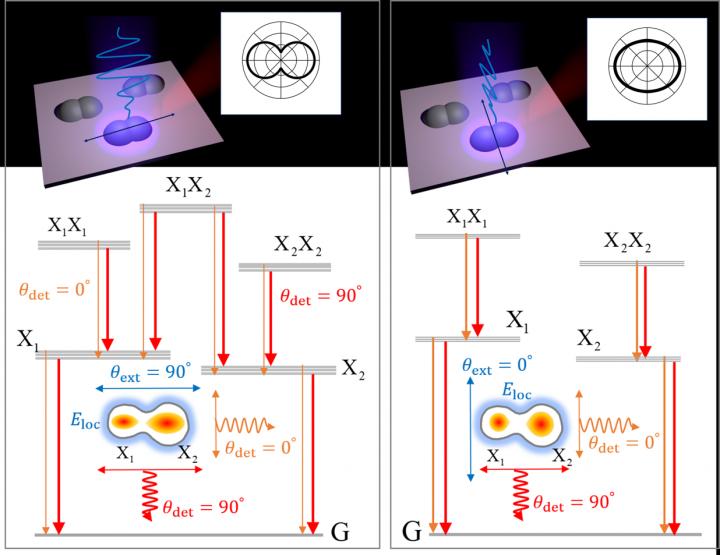
Credit: by Kwangseuk Kyhm
Coupled quantum dots can be an important building block in the development of scalable quantum devices by controlling the quantum states of two adjacent quantum dots (QDs) electrically and optically. Recently, remarkable progress has been made in controlling the coupled states of CQDs, but individual control of vertically stacked quantum dots is still challenging. Unless each dot can provide a logical bit operation, this becomes a limit in progress towards scalable qubit arrays. Laterally-coupled QDs can be an alternative system if the charge state and the lateral coupling of two dots are controlled separately. For example, tunable vector electric fields with arbitrary magnitude and angles can be generated in laterally-coupled QDs when four electrodes are implemented in a mesa structure.
In a new paper published in Light Science & Applications, an international team of scientists from China, South Korea, and the UK has found that emission from laterally coupled quantum dots is strongly polarized along the coupling direction (90°), and its polarization anisotropy can be shaped by changing the orientation of the polarized excitation. When the linear polarization of non-resonant excitation is perpendicular to the coupled direction (0°), excitons and local biexcitons from the two separate quantum dots still show an emission anisotropy with a small degree of polarization (10%). On the other hand, when the excitation polarization becomes parallel to the coupled direction, the polarization anisotropy of excitons, local biexcitons, and coupled biexcitons becomes enhanced with a degree of polarization of 74%. They also observed a consistent anisotropy in time-resolved photoluminescence. Therefore, the coupling of laterally-coupled QDs can be controlled by excitation polarization. Specifically, they revealed the optically-controlled anisotropic wavefunctions in terms of the anisotropy of the emission intensity and decay rate. These results confirm that optical shaping of the polarization anisotropy is possible in laterally coupled QDs, where the spatial arrangement of excitons and biexcitons can be controlled by excitation polarization.
“New information storage technologies could use this polarized light to control the optical properties of coupled quantum dots. The idea of combining quantum dots – nanoscale semiconductor crystals – into coupled pairs has attracted great attention due to the increased number of exotic quantum states that can be realized for storing data. This ‘optical shaping’ reflects different arrangements of excitons – bound states of electrons and holes – in the coupled dots, and could open new avenues for data storage and thermoelectric energy harvesting.”
###
Media Contact
Kwangseuk Kyhm
[email protected]
Related Journal Article
http://dx.




